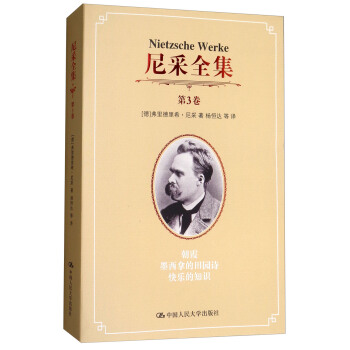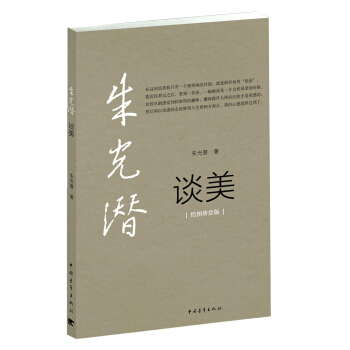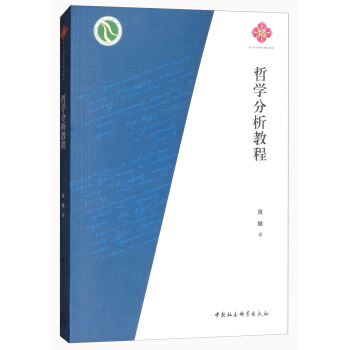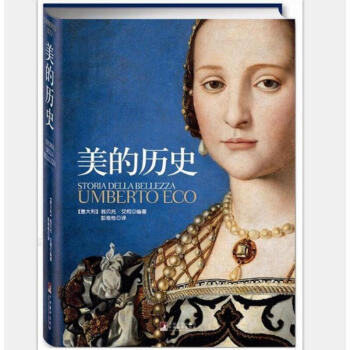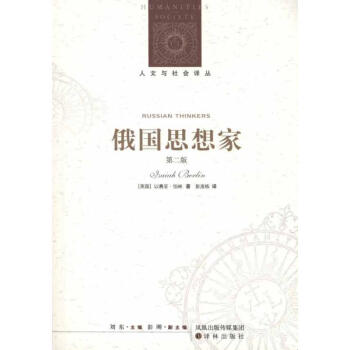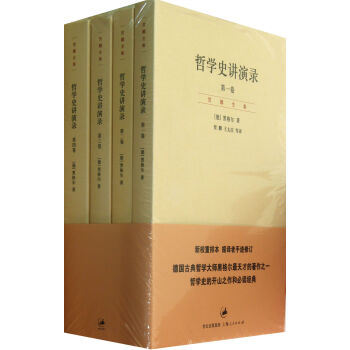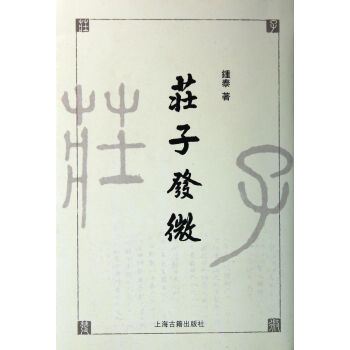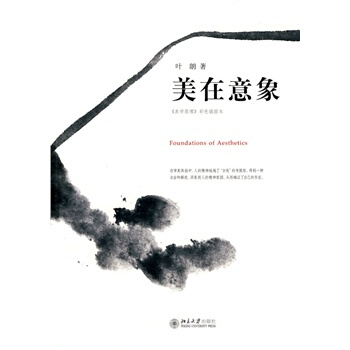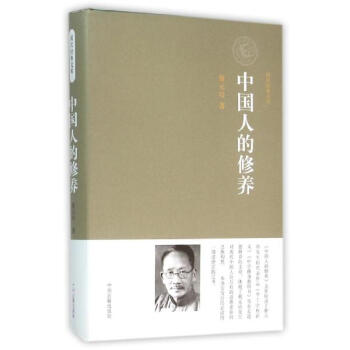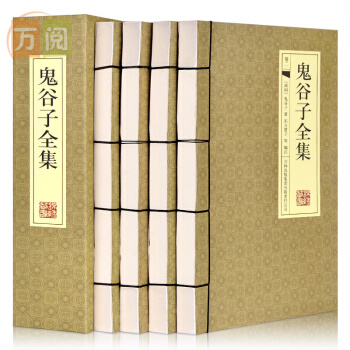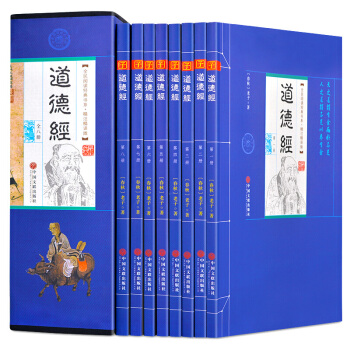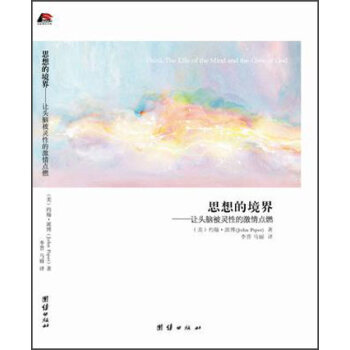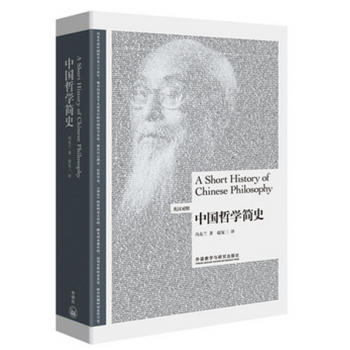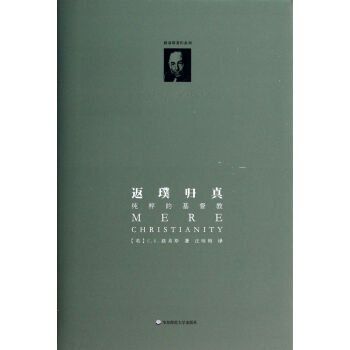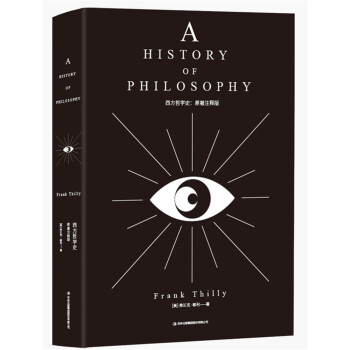

具体描述
编辑推荐
v 特,然而恰恰是他,写出了中西方学界公认的公正、客观、全面的哲学史,其架构、论述类别、视角都独树一帜。
v 书籍经典:哲学史上第一部以讲义为基础、以史家宏观视角编写的哲学著作。影响深远。是学习哲学的人士案头必备工具书,与罗素的西哲史并驾齐驱,为哲学界之双璧。
v 译文优秀:本书为北京大学哲学博士贾辰阳和解本远二位专家联袂翻译打造,历时多年,殚精竭虑,译文考究,再三锤炼,摒弃旧式哲学类书晦涩艰深超过原文的通病,通俗,易懂,精准,同类书籍,无出其右。
内容简介
本书为中英双语两本,以硬装盒装形式呈现。它是一部讲述西方哲学发展历程的著作,其雏形为梯利教授在大学任教时的讲义。此次出版,共有中英文两本。具体分为希腊哲学、中世纪哲学、近代哲学三编。往下又划分为自然哲学、知识和行为问题、重建时期、伦理运动、宗教运动、基督教和中世纪哲学的古典来源、经院哲学的形成期、文艺复兴时期的哲学、英国经验主义的开端、欧洲大陆的唯理论、启蒙运动哲学、康德的批判哲学、德国的唯心主义、黑格尔之后的德国哲学、法国和英国的哲学、法对理性主义和唯心主义等二十篇。篇下设章,讲述更为具体。文后附原书索引,便于读者检索细目。中文字数接近七十万,是一部规模宏大的哲学史著作。此次中英文两册一起出版,规模浩大,出版方特意延请业内的两位哲学博士共同翻译打造校准,力求让此选题更加精准、完善,让更多学人、哲学爱好者,一起了解并传播西方哲学。
作者简介
弗兰克·梯利(Frank Thilly,1865—1934),美国著名哲学家和哲学史家,曾先后在密苏里州立大学、普林斯顿大学、康乃尔大学教授哲学和心理学,并于1915年至1921年间担任康奈尔大学文学院院长。著作有《西方哲学史》《伦理学导论》等。
目录
IntroductionPART ONE. GREEK PHILOSOPHY
Ⅰ. Philosophy of Nature
1. ORIGIN AND DEVELOPMENT OF EARLY GREEK THOUCHT.
History of Greek Philosophy —— Environment—— Politics—— Literature —— Religious Origins of Greek Philosophy—— Survey of Greek Philosophy
2. DEVELOPMENT OF PRE-SOPHISTIC PHILOSOPHY
3. THE PROBLEM OF SUBSTANCE
Thales —— Anaximander —— Anaximenes —— Pythagorasand His School
4. THE PROBLEM OF CHANGE
Permanence and Change —— Heraclitus —— The EleaticSchool
5. QUALITATIVE THEORIES
Solution of the Riddle of Change —— Empedocles ——Anaxagoras
6. QUANTITATIVE THEORIES
The Atomism of Democritus —— Metaphysics and Cosmology—— Psychology and Theory of Knowledge—— Theology and Ethics
Ⅱ. Problems of Knowledge and Conduct
7. THE AGE OF THE SOPHISTS
Progress of Thought —— Greek Enlightenment —— The Sophists
8. SOCRATES AND THE SOCRATIC SCHOOLS
The Socratic Problem —— The Socratic Method —— The Socratic Ethics —— The Socratic Schools
Ⅲ. The Age of Reconstruction
9. PLATO
Plato and His Problem —— Dialectic and Theory of Knowledge —— Hierarchy of the Sciences —— Doctrine of Ideas —— Philosophy of Nature —— Cosmology —— Psychology —— Doctrine of Immortality —— Ethics —— Politics ——Plato's Historical Position- The Platonic School
10. ARISTOTLE
Aristotle's Problems —— Philosophy and the Sciences ——Logic —— Metaphysics —— The Four Causes —— Theology—— Physics —— Biology —— Psychology —— Ethics —— Politics —— Aristotle's Genius and Influence —— Post-Aristotelian Philosophy
Ⅳ. The Ethical Movement
11. THE OUTLOOK
12. EPICUREANISM
The Problem —— Logic and Epistemology —— Meta——physics —— Psychology —— Ethics —— Social and Political Philosophy
13. STOICISM
Zeno and His School —— Logic and Theory of Knowl-edge —— Metaphysics —— Cosmology —— Psychology ——Ethics —— Politics —— Religion —— Resume of Greek Ethics
14. SKEPTICISM AND ECLECTICISM
The Skeptical School —— Doctrines of the School ——Later Skeptics —— Eclecticism
Ⅴ. The Religious Movement
15. JEWISH-GREEK PHILOSOPHY
Philosophy and Religion —— Beginnings of Jewish-Greek Philosophy —— Philo
16. NEOPLATONISM
Pythagorean Sources of Neoplatonism —— Neoplatonism—— Plotinus —— Later Neoplatonism —— Closing of the School at Athens
PART TWO. MEDIEVAL PHILOSOPHY
Ⅵ. Christian and Classical Sources of Medieval Philosophy
Ⅶ. The Formative Period of Scholasticism
Ⅷ. The Period of Maturity: The Thirteenth Century
Ⅸ. Period of Decline: After the Thirteenth Century
PART THREE. MODERN PHILOSOPHY
Ⅹ. Philosophy of the Renaissance
Ⅺ. The Beginnings of British Empiricism
Ⅻ. Continental Rationalism
ⅩⅢ. The Development of British Empiricism
ⅩⅣ. The Development of Rationalism in Germany
ⅩⅤ The Philosophy of the Enlightenment
ⅩⅥ. The Critical Philosophy of Immanuel Kant
ⅩⅦ. German Idealism
ⅩⅧ. German Philosophy after Hegel
ⅩⅨ. Philosophy in France and England
ⅩⅩ. Reaction against Rationalism and Idealism
Index
精彩书摘
Preface to the Revised Edition
THE FIRST edition of the late Professor Thilly’s A History ol Philosophy appeared over thirty-five years ago. Few books in the fields of philosophy or history have maintained undiminished popularity as texts and usefulness as reference works over so long a period. The remarkable vitality of Professor Thilly’s work may be traced to its original conception and execution.
Perhaps the outstanding characteristic of Professor Thilly’s approach to the history of philosophy was the objectivity and impartiality of his historical attitude, which escaped the distorting effect of a dogmatic interpretation of historical development. Professor Thilly allowed the philosophers to speak for themselves and, in the conviction that the later systems in the history of philosophy provide the criticism of earlier schools, kept his own criticism to a minimum.
Professor Thilly’s own two major philosophical commitments were to idealism and rationalism, but he did not allow his own philosophical biases to obtrude in his account of the historical figures with whom he dealt. Indeed, if anything, he was frequently more successful in the presentation of historical theories with which he was in disagreement than of those with which he was in sympathy. His idealism was not of the dogmatic Hegelian variety, but was closer to the critical idealism of Kant. Professor Thilly considered mind an indubitable fact whose existence was guaranteed by introspective experience. His idealism was, however, not a subjectivism which denied the external world or reduced it to the status of mere appearance, and his rationalism insisted that experience, or nature, has rational structure and coherence which render it intelligible to man’s rational mind. His was not a dogmatic rationalism of the Cartesian variety which posits innate, self-evident truths, but rather a critical rationalism, which considers the basic truths of mathematics and the underlying assumptions of science and philosophy to be indispensable presuppositions of an intelligible world.
A second feature of the book which explains its sustained success is the sense of proportion displayed in the presentation of thinkers in their place in philosophical movements. Without adopting an Hegelian dialectic of the history of philosophy, Thilly discerned an inner logic in historical development. Individual thinkers were integrated to movements, and the movements in their turn formed parts of a larger historical pattern. His recognition of the inner logic of the historical process did not, however, prevent his giving due recognition to the social, political, cultural, and personal or temperamental factors which influence individual philosophers. Thilly’s assimilation of philosophers to movements was particularly skillful in his organization of the modern period. Bacon and Hobbes were grouped together as two relatively independent figures who, while not properly part of the British empiricism of Locke, Berkeley, and Hume, prepared the way for it. Descartes and Spinoza were considered together as the founders of continental rationalism, and Leibniz, instead of being included, as was customary, as the third in the triumvirate of rationalists, was introduced after British empiricism as a philosopher of the enlightenment.
A third feature was the clarity and simplicity of Professor Thilly’s style. In discussing with me the composition of his history Professor Thilly told me that the book grew out of a study of the history of philosophy written with no intention of publication, but solely for the purpose of clarifying his own understanding of the historical philosophers and their relations to one another. This clarification which Thilly achieved for himself pervades the entire exposition.
Professor Thilly’s interest in the history of philosophy was not that of the historical antiquarian who seeks merely to record the achievements of the past, nor was it primarily that of the historian of ideas who merely traces the continuous history of ideas and conceptions. It was that of the philosopher who seeks philosophical illumination in the history of his subject. He thought of the history of philosophy as a repository of philosophical ideas from which the philosopher draws his materials and his insights. He rejected the study of the history of philosophy merely for its own sake, but at the same time deplored the pseudo-originality of those who are ignorant of the philosophical achievements of the past. The study of the history of philosophy, he said in his introduction, “serves as a useful preparation to philosophical speculation, passing, as it does, from the simpler to the more complex and difficult constructions of thought... The man who tries to construct a system of philosophy in absolute independence of the work of his predecessors cannot hope to rise very far beyond the crude theories of the beginnings of civilization.” This Professor Thilly conceived to be the value of this historical study for himself, and this is the value he hoped it would have for his readers.
I have tried in the present revision to preserve the objective and impartial attitude of the original, and have retained the basic organization except when modification seemed to be indicated by the altered historical perspective. Considerable new material has been introduced, particularly in introductory and transitional sections. In section I the religious sources of Greek philosophy have been traced, in the light of the work of such histories as Cornford’s and Jaeger’s, to indicate more clearly both how Greek philosophy emerged from Greek religion and the essential differences between philosophy and the religion from which it arose. The organization of sections 5 and 6 has been recast so as to emphasize the differences between qualitative and quantitative theories and to give greater prominence to the quantitative atomism of Democritus.
In the section on Plato I have prepared new material on the “Hierarchy of the Sciences,”“Cosmology,” and the “Doctrine of Immortality,” and in the section on Aristotle, material on “The Four Causes” and “Aristotle’s Genius and Influence” has been added. Sections 17, 20, and 22 have been entirely rewritten, so as to provide a more adequate transition from the ancient to the medieval period, and also to afford a preliminary survey of scholasticism.
The most extensive changes and additions have been made in Part Three, on Modern Philosophy. The sections on the “Philosophy of the Renaissance,” which, in Professor Thilly’s arrangement, were appended to “The Decline of Scholasticism” in Part Two, have been reoriented and transferred to Part Three. In the section on Kant I have added material on “The Transcendental Method,”“Preliminary Analysis of Experience,” and “The Unity of SelfConsciousness,” in order to clarify Kant’s philosophical method and to differentiate it more sharply from the methods of empiricism and rationalism. A comprehensive account of Nietzsche is presented in section 66; it considers Nietzsche in the historical context of German philosophy rather than, as did Professor Thilly’s treatment, in the context of contemporary pragmatism.
用户评价
这本书的开篇导论部分,着实让我眼前一亮,完全没有那种传统哲学史著作的晦涩与沉闷。作者似乎有一种魔力,能够将那些看似遥不可及的古希腊思想家的论证,用一种极其贴近生活、富有画面感的方式娓娓道来。我尤其欣赏他对“苏格拉底之问”的重新解读,不再仅仅停留在对“美德即知识”的表面阐释上,而是深入挖掘了其背后的社会动因与个人精神困境。阅读时,我仿佛置身于雅典的集市,能真切感受到辩论的火花和思想碰撞的张力。文字的节奏把握得非常好,时而如涓涓细流,细致入微地剖析概念的演变;时而又如山洪暴发,将不同学派间的冲突推向高潮,使读者能清晰地辨识出早期西方思想图景的宏大脉络。这种叙事上的活力和对文本的深刻洞察力,使得即便是初次接触西方哲学的读者,也能迅速建立起一套稳固的知识框架,而非被一堆陌生的术语所淹没。它不仅仅是在罗列历史事实,更是在重构一场场精彩绝伦的思想探险。
评分最后,对于十九世纪末到二十世纪初的哲学转向,本书的处理显得尤为现代和包容。作者对存在主义、现象学以及分析哲学的并置处理,没有表现出明显的派系偏好,而是将其视为对近代哲学危机(尤其是对形而上学基础的动摇)的不同回应。对于尼采的“权力意志”和海德格尔的“此在”,作者的处理方式非常克制,不作价值判断,而是聚焦于他们如何重新定位了“主体”在世界中的位置。阅读这些后现代思潮时,文字变得更加碎片化、更具反思性,充满了对语言边界的试探。这种对当代哲学思辨的细致梳理和公正呈现,使得这本书的价值超越了单纯的历史回顾,成为了一份极具启发性的思想指南,帮助读者理解我们当下所处的思想困境和未来的可能性。
评分深入到中世纪篇章时,我感受到了作者在处理神学与理性之间复杂张力时的精妙平衡。与其他一些著作倾向于将经院哲学简单地视为神学附庸的做法不同,这本书用了大量的篇幅来展现那个时代思想家们为了调和柏拉图主义、亚里士多德主义与基督教教义时所付出的巨大智力努力。例如,在评述托马斯·阿奎那的工作时,作者没有机械地复述“五路证明”,而是着重分析了“目的论”在当时语境下的必要性和局限性。文字的风格在此处变得更加严谨和结构化,充满了对逻辑推理过程的尊重,但同时又穿插着对当时大学体制和教会权力对知识生产制约的社会学观察。这种多维度的审视,让中世纪哲学不再是黑暗时代的一个注脚,而是一个充满内在逻辑斗争和深刻形而上学探索的活跃时期。读完这部分,我对“理性”在信仰框架内如何运作有了更细致的认识,而非简单的二元对立。
评分全书在处理康德及其后继者时,展现了令人赞叹的驾驭复杂思辨体系的能力。康德的“三大批判”通常是哲学导读中的“鬼门关”,但在这本书中,作者巧妙地运用了类比和场景重构的方法,将先验直观和范畴体系的复杂性“降维”处理。我特别喜欢他描述“物自体”时的那种克制与敬畏感,仿佛在描述一个人类理性永远无法企及的彼岸。随后的德国唯心主义部分,如黑格尔的辩证法,作者避免了过度简化,而是着重探讨了“精神”在历史中自我展开的内在必然性,文字结构变得更加宏大和史诗化,充满了对历史运动的激情。这部分阅读起来,与其说是在读哲学史,不如说是在跟随一场波澜壮阔的意识形态的演变史诗,让人在精神上备受震撼,对“系统性思维”的魅力有了更深层次的体会。
评分进入到文艺复兴和早期现代哲学时,这本书的处理方式可谓是“颠覆性”的。它没有采用以往常见的、以笛卡尔为绝对起点的叙事,而是花费了相当大的笔墨来探讨人文主义者对古典文本的重新发现及其对知识观的冲击。特别是对斯宾诺莎的阐释,展现出一种近乎诗意的数学美感,作者似乎在努力模仿其著作的内在结构,用一种清晰、几何化的语言来解析“实体”与“样式”的关系。这种对文本风格的模仿与呼应,极大地增强了阅读的沉浸感和智力上的挑战性。我发现,每当讨论到一个关键转折点,比如经验主义和理性主义的对峙,作者总能提炼出一个极具概括性的比喻,让抽象的认识论争辩立刻变得鲜活起来,仿佛你能看到洛克在花园里沉思,而莱布尼茨则在柏林的书房中奋笔疾书,各自构建着不同的认知大厦。
相关图书
本站所有内容均为互联网搜索引擎提供的公开搜索信息,本站不存储任何数据与内容,任何内容与数据均与本站无关,如有需要请联系相关搜索引擎包括但不限于百度,google,bing,sogou 等
© 2025 book.coffeedeals.club All Rights Reserved. 静流书站 版权所有


